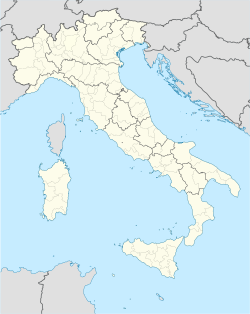San Michele al Tagliamento | |
|---|---|
| Comune di San Michele al Tagliamento | |
 | |
| Coordinates: 45°45′49″N12°59′43″E / 45.76361°N 12.99528°E | |
| Country | Italy |
| Region | Veneto |
| Metropolitan city | Venice (VE) |
| Frazioni | Bevazzana, Bibione, Cesarolo, Pozzi, San Giorgio al Tagliamento, III Bacino, Villanova-Malafesta Località: Marinella, San Filippo |
| Government | |
| • Mayor | Flavio Maurutto |
| Area | |
• Total | 112.3 km2 (43.4 sq mi) |
| Elevation | 7 m (23 ft) |
| Population (31 January 2009) [2] | |
• Total | 11,908 |
| • Density | 110/km2 (270/sq mi) |
| Demonym | Sanmichelini |
| Time zone | UTC+1 (CET) |
| • Summer (DST) | UTC+2 (CEST) |
| Postal code | 30028 |
| Dialing code | 0431 |
| Patron saint | Madonna della Salute |
| Saint day | 21 November |
| Website | Official website |
San Michele al Tagliamento is an Italian Municipality with 11,930 inhabitants [3] in the Metropolitan City of Venice, Veneto, Italy.
Contents
SS14, one of the main state highways in Italy, passes through the commune, whose frazione of Bibione is a popular tourist resort.
The neighboring municipalities are Caorle, Fossalta di Portogruaro, Latisana, Lignano Sabbiadoro, Morsano al Tagliamento, Portogruaro, Ronchis and Varmo.



